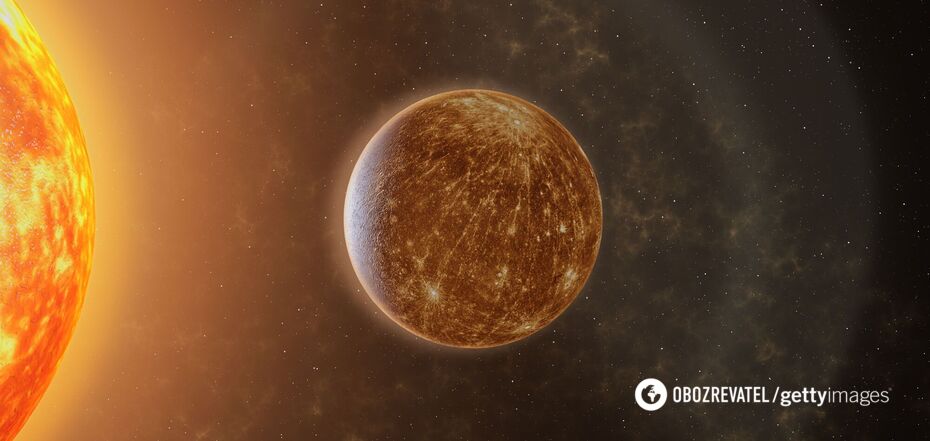News
Mercury may have "zones of life": scientists made an incredible discovery
There may be salt glaciers on the surface of Mercury that can create the conditions necessary for life at a depth of several kilometers below the planet's surface. These rock salts can surround the entire planet and change scientists' perceptions of Mercury as a barren desert.
This is stated in a study published in The Planetary Science Journal. Previously, scientists believed that there were no compounds such as water and salts on Mercury.
Space scientists call compounds that can evaporate volatile. Historically, it was believed that they were practically absent on Mercury due to the extreme temperatures caused by the proximity to the Sun and the lack of an atmosphere.
However, over the past decades, researchers have discovered landforms on the planet's surface that indicate that there may be volatile substances that are sublimated into space.
For example, Alexis Rodriguez of the Planetary Science Institute in Arizona (USA) and his colleagues used data from the Messenger spacecraft, which orbited Mercury from 2011 to 2015, to study the area around the planet's north pole.
They found several areas dotted with hollows and collapsed ravines. This, according to scientists, indicates some glacial activity at a depth of several kilometers below the surface. They were discovered thanks to traces left by meteorite impacts and weathering.
The researchers assume that these glaciers are composed of halite - otherwise known as table salt - or other forms of salt. The depth of this layer of salt is approximately 2 kilometers, and this layer may surround the entire planet.
If this is true, then such a layer could have appeared as a result of the decay of the primordial atmosphere, Rodriguez believes.
"The first thing you would notice (during the decay of the atmosphere - Ed.) is that the atmospheric pressure is falling very quickly as if you were climbing Mount Everest. In fact, snowfall accumulates around you and the atmosphere turns into ice, which accumulates on the surface," the scientist explained.
Over time, the layer was buried under the surface after the planet was bombarded by asteroids.
For Earth-based scientists, the discovery of these salt glaciers can be a significant discovery as it is known that life on Earth can be preserved in moistened lumps of salt. So it's possible that small pockets of salty slush may exist deep beneath Mercury's surface that have been preserved for millions of years.
"When you have Earth in our solar system with so much life, thinking about these disparate niches of habitable life so close to the Sun seems out of place until you think about the galaxy. I think Mercury is probably very sterile, but it may have habitable zones underground. Think about 100 million Mercuries, each with habitable zones," Rodriguez said.
Such a discovery could eventually dramatically increase the number of worlds in the universe that scientists consider potentially habitable.
Earlier, OBOZ.UA reported that organic elements were discovered on Jupiter's moon Ganymede. A similar discovery was made in the water on the dwarf planet Cirera.
Subscribe to OBOZ.UA on Telegram and Viber to keep up with the latest events.



























